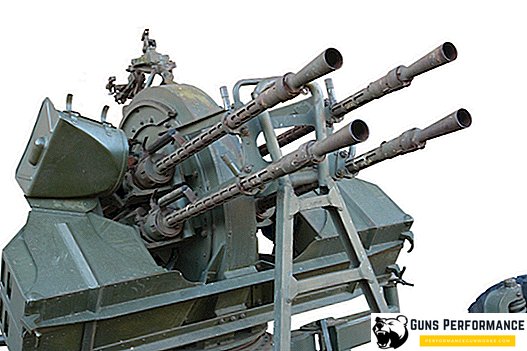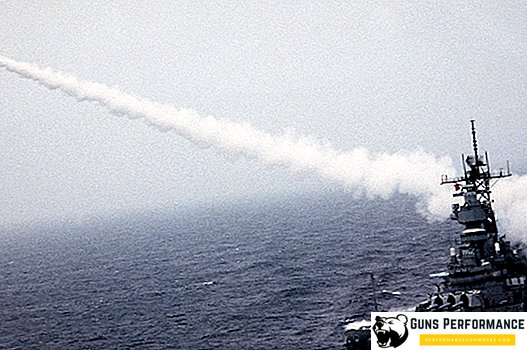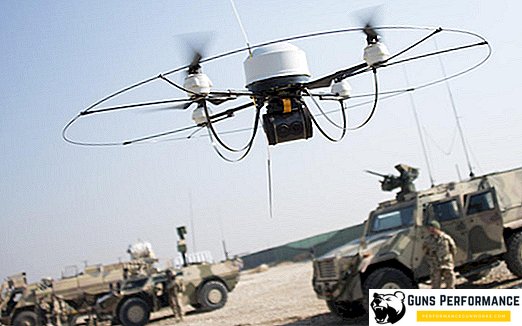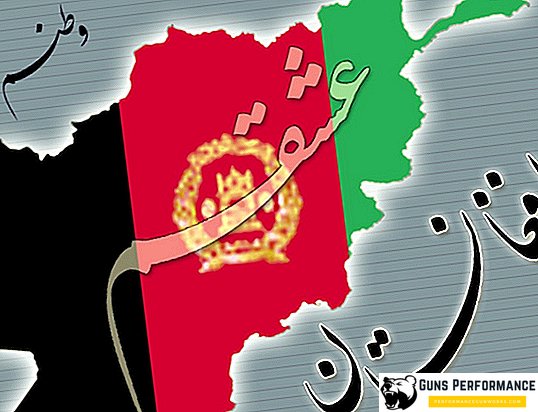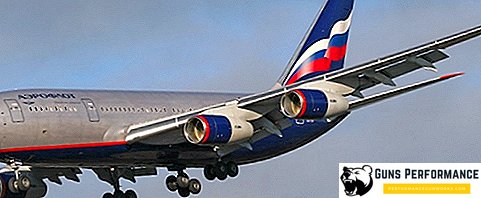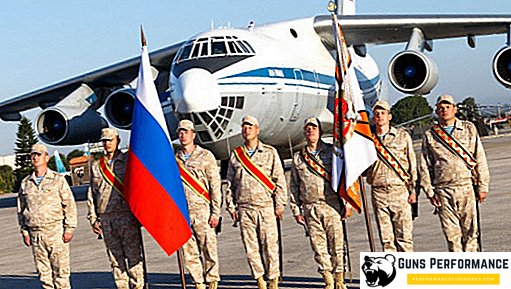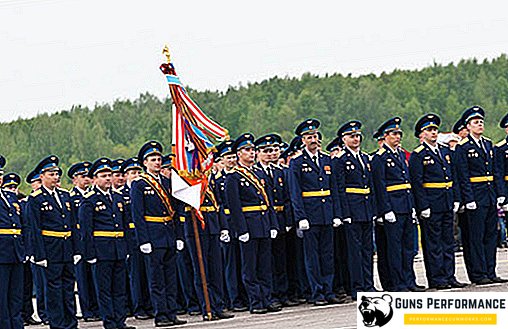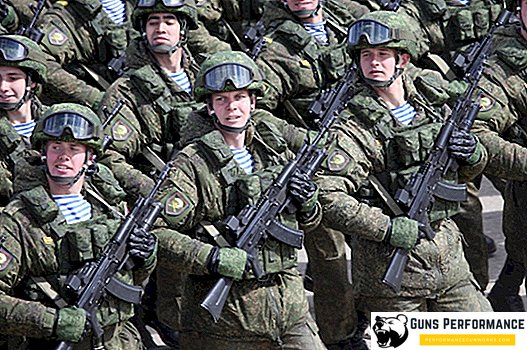
The main guarantor of the independence and inviolability of the borders of any state is its armed forces. Diplomacy and economic means are certainly important (and effective) instruments of international politics, but only a country that is able to protect itself is viable. The entire political history of mankind is proof of this thesis.
The Armed Forces of the Russian Federation (RF Armed Forces) are currently among the largest in the world in terms of numbers. In the ratings compiled by expert groups, the Russian army is usually among the top five, along with the armed forces of China, India, the United States and the DPRK. The number of the Russian army is determined by decrees of the president of the country, who according to the Constitution of the Russian Federation is the commander-in-chief of the armed forces. At present (summer of 2018), it is 1,885,371 people, including about 1 million troops. Today, the mobilization resource of our country is about 62 million people.
Russia is a nuclear state. Moreover, our country has one of the largest arsenals of nuclear weapons, as well as sophisticated and numerous means of their delivery. The Russian Federation provides a closed loop for the production of nuclear weapons.
Our country has one of the most developed military-industrial complexes in the world; the Russian military-industrial complex is able to provide the armed forces with practically the entire range of weapons, military equipment and ammunition from pistols to ballistic missiles. Moreover, Russia is one of the largest arms exporters in the world: in 2017, Russian weapons were sold for $ 14 billion.
The Armed Forces of the Russian Federation were created on May 7, 1992 on the basis of units of the USSR Armed Forces, but the history of the Russian army is much longer and richer. It can be called the successor of not only the armed forces of the USSR, but also the Russian imperial army, which ceased to exist in 1917.
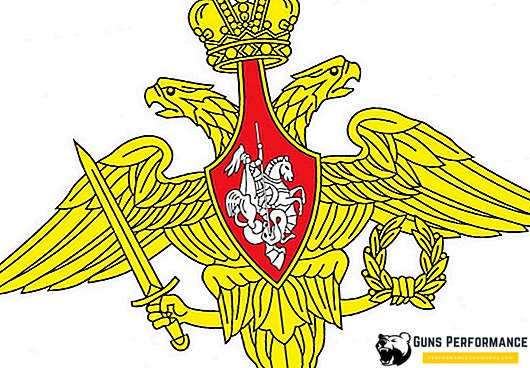
Nowadays, the recruitment of the Russian armed forces is based on a mixed principle: through conscription and on a contract basis. Modern state policy in the formation of the armed forces is aimed at increasing the number of professionals serving under the contract. Currently, the entire sergeant staff of the Armed Forces of the Russian Federation is fully professional.
The annual budget of the Russian armed forces in 2018 amounted to 3.287 trillion rubles. This is 5.4% of the country's total GDP.
Currently, the service life in the Russian army by conscription is 12 months. Men between the ages of 18 and 27 years old can be called up to the armed forces.
History of the Russian Army
On July 14, 1990, the first Russian military department appeared. It was called the “State Committee of the RSFSR for the Provision and Cooperation with the Ministry of Defense and the KGB of the USSR”. After the August coup in Moscow, the Ministry of Defense of the RSFSR was formed on the basis of a committee for a short time.
After the collapse of the USSR, the United Armed Forces of the CIS countries were formed, but this was a temporary measure: On May 7, 1992, the first Russian president, Boris Yeltsin, signed a decree establishing the Armed Forces of the Russian Federation.
Initially, all military units that were in the country, as well as troops that were under Russian jurisdiction, became part of the Armed Forces of the Russian Federation. Then their number was 2.88 million people. Almost immediately, the question arose of reforming the armed forces.
The 90s were a difficult period for the Russian army. Chronic underfunding led to the fact that the best cadres were leaving it, the purchase of new types of weapons almost stopped, many military factories were closed, and promising projects were stopped. Almost immediately after the creation of the Russian armed forces, plans were made to completely transfer them to a contract basis, but the lack of funding for a long time did not allow to move in this direction.
In 1995, the first Chechen campaign began, which demonstrated the disastrous situation of the Russian army. The troops were understaffed, the fighting showed serious shortcomings in their control.
In the second Chechen campaign (1999–2006), part of the constant readiness and airborne units took part. In 2003, the share of contractors in Chechnya reached 35%.
Back in the 90s, it was decided to divide all parts and formations of the Armed Forces of the Russian Federation into four categories:
- units of constant readiness, staffed by 95-100% of wartime states;
- reduced units (about 70%);
- bases of storage of military equipment and weapons (5-10%);
- cropped units (about 5%).
At the beginning of the 2000s, this reform was continued. The units of permanent readiness were decided to be fully transferred to a contract basis, and the remaining parts to be completed on an urgent basis.
The first unit, which was fully transferred to a contract basis, was one of the regiments of the Pskov airborne division. In 2005, the reform of the military administration began: it was planned to create three territorial commands, in the subordination of which all types and branches of the Armed Forces in this territory would fall. This reform was actively promoted by the Minister of Defense Serdyukov, who was appointed to the post in 2007. In addition, as far back as 2006, the state rearmament program until 2018 was adopted.
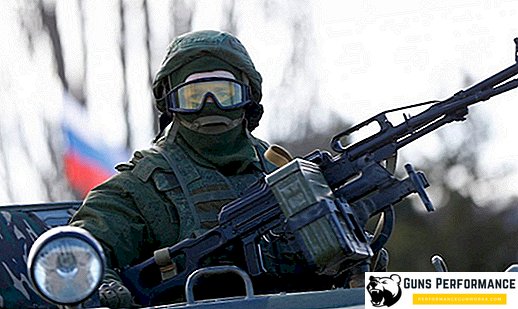
In 2008, the Armed Forces of the Russian Federation participated in the conflict in South Ossetia. He revealed a large number of shortcomings and problems of the modern Russian army. The most serious of these were low troop mobility and poor handling. After the end of the conflict, the beginning of military reform was announced, which was to significantly increase the mobility of the Armed Forces units and increase the consistency of their joint actions. The result of the reform was a reduction in the number of military districts (four instead of six), simplification of the ground forces control system, and a significant increase in the army budget.
All this made it possible to speed up the entry of new military equipment into the troops, to attract a greater number of professional contract soldiers, and to increase the intensity of combat training of units.
In the same period, the regiments and divisions began to reorganize into brigades. True, in 2013, the reverse process began: regiments and divisions began to form again.
In 2014, the Russian army played a key role in the return of the Crimea. In September 2018, the operation of the Armed Forces of the Russian Federation in Syria began, which continues to the present.
The structure of the Russian army
According to the Russian Constitution, the general leadership of the Russian armed forces is exercised by the Supreme Commander, who is the President of the country. He heads and forms the Security Council of the Russian Federation, whose task is to develop a military doctrine and the appointment of the top leadership of the armed forces. The President of the country signs decrees on urgent conscription and the transfer of military personnel to the reserve, approves various international documents in the field of defense and military cooperation.
The direct control of the armed forces is carried out by the Ministry of Defense. Its main task is to conduct state defense policy, maintain the Armed Forces constant readiness, develop the state’s military potential, solve a wide range of social issues, and undertake activities for interstate cooperation in the military sphere.
Currently (since 2012), the Russian Defense Minister is General of the Army Sergei Shoigu.
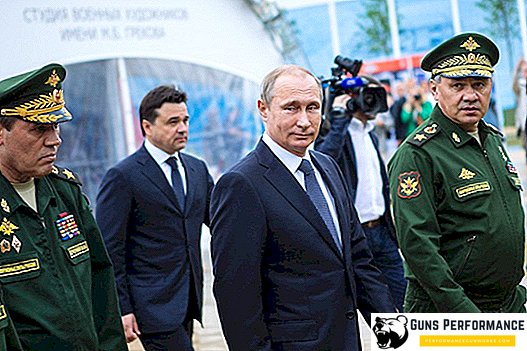
The operational command of the Armed Forces is carried out by the General Staff of the country. His chief at the moment is Army General Valery Gerasimov.
The General Staff conducts strategic planning for the use of the armed forces, as well as other law enforcement agencies of the Russian Federation. This body is also engaged in operational and mobilization training of the Russian army. If necessary, it is under the leadership of the General Staff that the mobilization deployment of the RF Armed Forces takes place.
Now the structure of the Armed Forces of the Russian Federation includes three types of troops:
- Ground troops;
- Naval forces;
- Military space forces.
Also an integral part of the Armed Forces of the Russian Federation are the following types of troops:
- Airborne troops;
- Strategic Missile Forces.
- Special troops.
The most numerous are the Ground Forces, they consist of the following types of troops:
- Motorized rifle;
- Tank;
- Air defense troops;
- Rocket troops and artillery;
- Special troops.
The ground forces are the backbone of the modern Russian army, it is they who conduct ground operations, seize territory and inflict the main damage to the enemy.

Aerospace forces are the youngest type of troops in the Russian army. The decree on their formation was issued on August 1, 2015. VKS were created on the basis of the Russian air force.
The structure of the VKS includes Air Force consisting of army, front, long-range and military transport aircraft. In addition, an integral part of the Air Force are anti-aircraft missile troops and radio engineering troops.
Another branch of the military, which is part of the VKS, are air defense and missile defense forces. Their task is to warn about a rocket attack, control the orbital constellation of satellites, anti-missile defense of the Russian capital, launch spacecraft, conduct tests of various types of rocket and aircraft. The structure of these particular troops includes two cosmodromes: the Plesetsk and Baikonur.
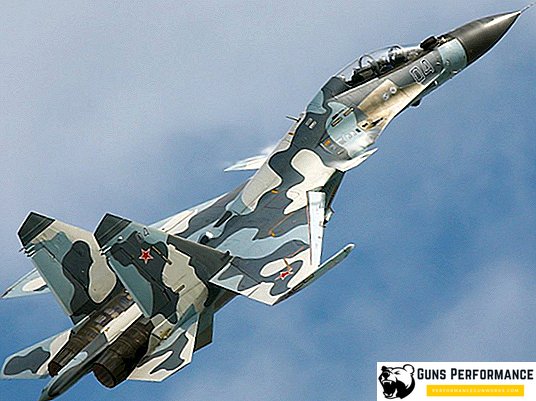
Another component of the Air Force is space troops.
The Navy is a type of armed forces that can conduct operations in the maritime and oceanic theaters of military operations. It is capable of delivering nuclear and conventional strikes on enemy sea and land targets, landing airborne troops on the coasts, protecting the country's economic interests, and conducting search and rescue operations.
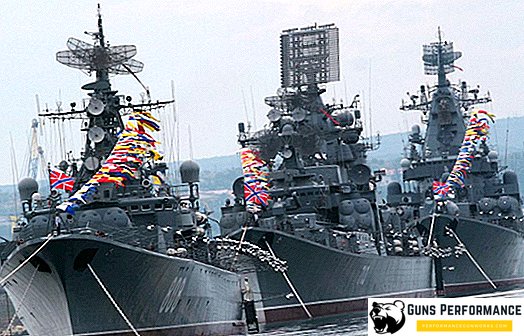
The structure of the Russian Navy includes surface, submarine forces, naval aviation, coastal troops and special forces. Submarine forces of the Russian Navy can perform strategic tasks, they are armed with submarine missile carriers with ballistic nuclear missiles.
The composition of the coastal troops includes units of marines and rocket-artillery coastal troops.
The Russian Navy has four fleets: the Pacific, Black Sea, Baltic and Northern, as well as the Caspian flotilla.
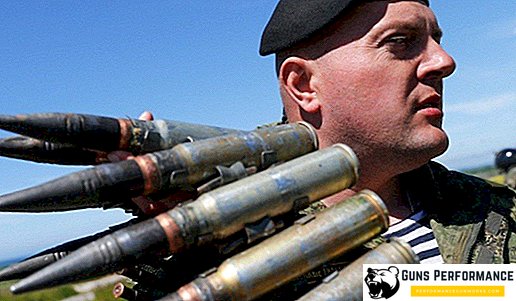
A separate branch of the troops are the Strategic Missile Forces - this is the main component of the Russian nuclear forces. The Strategic Missile Forces are a tool for global deterrence, it is a guarantee of retaliation in the event of a nuclear attack on our country. The main armament of the Strategic Missile Forces are strategic intercontinental missiles with a nuclear warhead mobile and silo-based.
The Strategic Missile Forces include three rocket armies (with headquarters in Omsk, Vladimir, and Orenburg), the Kapustin Yar proving ground, research and educational institutions.
Airborne troops also belong to a separate branch of the armed forces and are the reserve of the Commander-in-Chief. The first airborne units were formed in the USSR back in the early 30s. This branch of the military has always been considered the elite of the army; it remains so to this day.
The airborne and airborne assault units include divisions, brigades and separate units. The main purpose of the paratroopers - the conduct of hostilities in the rear of the enemy. Today, the Russian Airborne Forces include five divisions, five brigades and a separate communications regiment, as well as specialized educational institutions and training centers.
The structure of the Armed Forces of the Russian Federation also includes special troops. By this name is meant the aggregate of subdivisions that ensure the normal functioning of the Ground Forces, HVs and Navy. The special troops include railway troops, medical service, road and pipeline troops, topographic service. The special divisions of the GRU also belong to this branch of the military.
Territorial division of the Armed Forces
Currently, the territory of Russia is divided into four military districts: Western (headquarters is located in St. Petersburg), Central (headquarters in Yekaterinburg), Southern (Rostov-on-Don) and Eastern with headquarters in Khabarovsk.
In 2014, it was announced that a new military structure was being formed - the strategic command North, whose task is to protect Russian state interests in the Arctic. In fact, this is another military district created on the basis of the Northern Fleet. It has land, aviation and naval components.
Armament of the Russian army
Most types of weapons and military equipment, which is now used by the Russian army, was designed and manufactured in the Soviet period. The T-72, T-80, BTR-80, BMP-1, BMP-2 and BMP-3, BMD-1, BMD-2 and BMD-3 tanks all inherited from the USSR from the Russian army. The situation is similar with cannon and rocket artillery (RSZO Grad, Uragan, Smerch) and aviation (MiG-29, Su-27, Su-25 and Su-24). It cannot be said that this technique is catastrophically obsolete, it can be used in local conflicts against not very strong opponents. In addition, the USSR produced so many weapons and military equipment (63 thousand tanks, 86 thousand infantry fighting vehicles and armored personnel carriers) that they could be exploited for many more years.
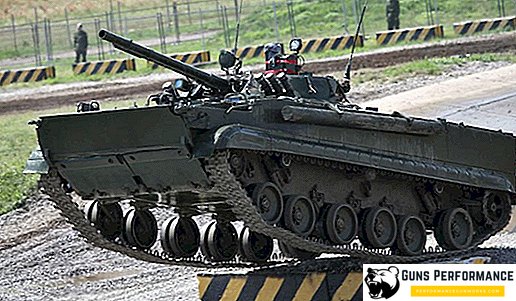
However, this technique is already significantly inferior to the latest analogues adopted by the armies of the United States, China and Western Europe.
From about the middle of the last decade, new models of military equipment began to be supplied to the Russian army. Today in the Armed Forces of the Russian Federation the process of rearmament is actively underway. Examples include the T-90 and T-14 Armata, Kurganets BMP, the BMD-3 airborne combat vehicle, the BTR-82, the Tornado-G and Tornado-S MLRS, tactical missile systems. Iskander ", the latest modifications of the Buk, Thor and Pantsir SAMs. There is an active renewal of the aircraft fleet (Su-35, Su-30, Su-34). A fifth-generation Russian fighter, the PAK FA, is being tested.
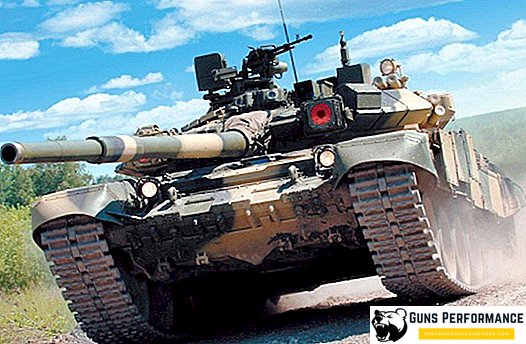
Currently, considerable funds are being invested in the re-equipment of the Russian strategic forces. Old missile systems built back in the USSR are gradually being removed from duty and replaced by new ones. There is a development of new missiles (such as "Sarmat"). The submarines of the fourth generation of the Borey project have been put into service. A new Bulava missile system was developed for them.
There is a rearmament of the Russian Navy. According to the state armaments development program (2011–2020), ten new nuclear submarines (both missile and multi-purpose), twenty diesel submarines (the Varshavyanka and Lada project), fourteen frigates ( projects 2230 and 13356) and over fifty corvettes of various projects.


